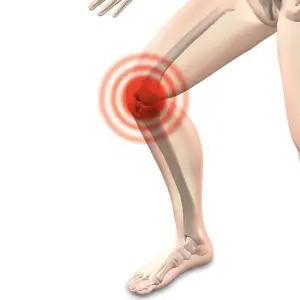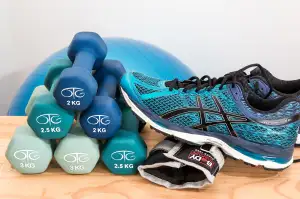Revitalize Your Quadriceps: Unlocking Tension with Quad Trigger Point Release

- Understanding the quadriceps and its role in muscle tension
- What are trigger points and how do they affect the quadriceps?
- The benefits of quad trigger point release therapy
- Step-by-step guide to performing quad trigger point release
- Precautions and considerations before trying quad trigger point release
- When to seek professional help for quad trigger point release
- Other techniques for relieving tension in the quadriceps
Quad trigger point release is a therapeutic technique that focuses on relieving tension and discomfort in the quadriceps muscles. The quadriceps, also known as quads, are a group of four muscles located at the front of the thigh. These muscles play a crucial role in activities such as walking, running, and jumping.
Over time, due to factors like overuse, poor posture, or injury, trigger points can develop in the quadriceps. Trigger points are hyperirritable spots within the muscle fibers that can cause pain and tightness. Quad trigger point release aims to alleviate these trigger points and restore balance and flexibility to the quadriceps.
By incorporating quad trigger point release into your wellness routine, you can experience improved muscle function, reduced pain and discomfort, and enhanced overall well-being. In this article, we will explore the benefits of quad trigger point release therapy and provide a step-by-step guide on how to perform it effectively. We will also discuss precautions and considerations before trying this technique on your own and when it may be necessary to seek professional help. Additionally, we will explore other techniques for relieving tension in the quadriceps so that you can find what works best for you. Let's dive into the world of quad trigger point release therapy and unlock tension for revitalized quadriceps!
Understanding the quadriceps and its role in muscle tension
The quadriceps, also known as the quads, are a group of muscles located at the front of the thigh. Comprising four individual muscles - rectus femoris, vastus lateralis, vastus medialis, and vastus intermedius - the quadriceps play a crucial role in lower body movement and stability.
These powerful muscles are responsible for extending the knee joint and assisting in hip flexion. They are heavily engaged during activities such as walking, running, jumping, and squatting. However, due to their constant use and involvement in various movements, the quadriceps can become tight and develop muscle tension.
Muscle tension in the quadriceps can occur due to factors like overuse, repetitive movements, poor posture, or muscular imbalances. When these muscles become tight and tense, it can lead to discomfort, pain, limited range of motion, and even affect other areas of the body such as the lower back or knees.
Understanding the role of the quadriceps in muscle tension is essential for effectively addressing any issues that may arise. By recognizing how these muscles function and interact with other parts of the body, individuals can take proactive steps towards relieving tension and promoting overall muscle health.
What are trigger points and how do they affect the quadriceps?
Trigger points are highly sensitive areas within the muscle fibers that can cause pain and discomfort. In the case of the quadriceps, trigger points can develop due to overuse, injury, or poor posture. These trigger points can lead to muscle tension and tightness in the quadriceps, making it difficult to move freely and perform daily activities. When trigger points are present in the quadriceps, they can refer pain to other areas such as the knees or hips. It is important to address these trigger points to release tension and restore proper function to the quadriceps muscles.
The benefits of quad trigger point release therapy
The benefits of quad trigger point release therapy are numerous. Firstly, it helps to alleviate muscle tension and tightness in the quadriceps, leading to improved flexibility and range of motion. This can be especially beneficial for athletes and individuals who engage in activities that put strain on the quads.
Additionally, quad trigger point release therapy can help reduce pain and discomfort caused by trigger points in the quadriceps. By targeting these specific areas of tension, it promotes relaxation and releases built-up knots in the muscle fibers. This can provide relief from chronic pain conditions such as myofascial pain syndrome.
Furthermore, quad trigger point release therapy can enhance overall muscle performance and prevent injuries. By releasing tension in the quads, it allows for better muscle activation and coordination during physical activities. This can lead to improved athletic performance and reduced risk of strains or sprains.
Lastly, quad trigger point release therapy has a positive impact on overall well-being. It promotes relaxation and stress reduction by stimulating the body's natural healing response through increased blood flow and oxygenation to the muscles. This not only improves physical health but also contributes to mental relaxation and a sense of rejuvenation.
Incorporating quad trigger point release therapy into your wellness routine can have significant benefits for your quadriceps health as well as your overall well-being.
Step-by-step guide to performing quad trigger point release
1. Start by lying on your stomach on a comfortable surface, such as a yoga mat or padded floor.
2. Bend one knee and bring your foot towards your buttocks, keeping the other leg straight.
3. Use your hands or a foam roller to locate any tender spots or knots in your quadriceps muscle.
4. Apply gentle pressure to the trigger points using your fingers, thumbs, or the foam roller.
5. Hold the pressure for about 30 seconds or until you feel a release of tension in the muscle.
6. Slowly move along the length of your quadriceps, repeating the process on any other trigger points you find.
7. Take deep breaths and try to relax as you work on each trigger point.
8. If using a foam roller, roll back and forth over the trigger points for added relief.
9. Repeat this process on both legs, focusing on any areas that feel particularly tight or painful.
10. After completing quad trigger point release, stretch your quadriceps by bringing your heel towards your buttocks while standing or lying down.
Remember to listen to your body and adjust the pressure accordingly. If you experience severe pain or discomfort during quad trigger point release, stop immediately and consult with a healthcare professional before continuing.
Precautions and considerations before trying quad trigger point release
Before attempting quad trigger point release therapy, it is important to consider a few precautions. Firstly, if you have any underlying medical conditions or injuries, it is advisable to consult with a healthcare professional before trying this technique. They can provide guidance specific to your situation and ensure it is safe for you.
Additionally, be cautious not to apply excessive pressure or force during the release. Start with gentle pressure and gradually increase as tolerated. It is crucial to listen to your body's signals and avoid causing any pain or discomfort.
Furthermore, if you experience any unusual sensations or increased pain during the quad trigger point release, stop immediately and seek medical advice. This could indicate an underlying issue that requires professional attention.
Lastly, remember that quad trigger point release should not replace proper medical treatment for chronic conditions or injuries. It can be a helpful complementary technique but should not be relied upon as the sole solution.
By taking these precautions and considering your individual circumstances, you can safely incorporate quad trigger point release into your wellness routine for optimal results.
When to seek professional help for quad trigger point release
When it comes to quad trigger point release therapy, it is important to know when to seek professional help. If you have chronic or severe muscle tension in your quadriceps that does not improve with self-care techniques, it may be time to consult a healthcare professional. Additionally, if you have any underlying medical conditions or injuries that could be contributing to the muscle tension, it is advisable to seek guidance from a qualified healthcare provider. They can assess your condition, provide a proper diagnosis, and recommend appropriate treatment options tailored to your specific needs. Remember, seeking professional help ensures that you receive the best care and avoid potential complications.
Other techniques for relieving tension in the quadriceps
Other techniques for relieving tension in the quadriceps include foam rolling, stretching exercises, and massage therapy. Foam rolling involves using a cylindrical foam roller to apply pressure to the muscles, helping to release tension and improve flexibility. Stretching exercises such as lunges and standing quad stretches can also help to relieve tension in the quadriceps. Additionally, massage therapy can be beneficial in targeting specific trigger points and releasing muscle tension. It is important to consult with a qualified professional before attempting any of these techniques to ensure proper form and technique.
Incorporating quad trigger point release into your wellness routine can have numerous benefits. By regularly performing this therapy, you can effectively relieve tension and tightness in your quadriceps muscles, promoting flexibility and preventing injuries. Additionally, quad trigger point release can improve circulation, reduce muscle soreness, and enhance overall athletic performance.
To make quad trigger point release a part of your wellness routine, dedicate a few minutes each day to perform the therapy. Follow the step-by-step guide provided earlier in this article to target specific trigger points in your quadriceps. Be consistent and patient with the process as it may take time for noticeable results.
It is important to remember that quad trigger point release should not replace professional medical advice or treatment. If you experience severe pain or if the tension in your quadriceps persists despite regular therapy, it is advisable to seek help from a qualified healthcare professional.
In addition to quad trigger point release, consider incorporating other techniques such as stretching exercises, foam rolling, and regular massages to further relieve tension in your quadriceps. These complementary techniques can provide additional benefits and enhance the effectiveness of quad trigger point release therapy.
By prioritizing the health of your quadriceps through quad trigger point release and other relaxation techniques, you can revitalize these muscles and unlock their full potential. Embrace this practice as a vital component of your wellness routine and experience the transformative effects on both your physical well-being and overall quality of life.
Published: 18. 02. 2024
Category: Health



